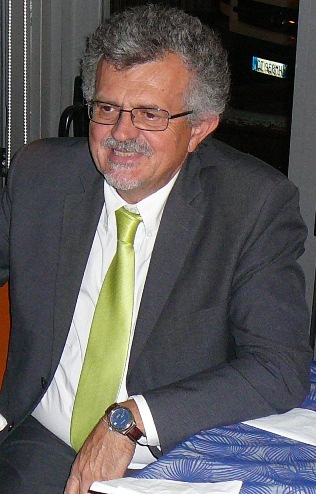Q&A with Marco Rufino, Europeana Fashion

In this extended post, Marco Rufino, the project co-ordinator for Europeana Fashion, is interviewed about the aims and challenges of the project.

Marco Rufino, project co-ordinator for Europeana Fashion
With a degree in Historical Studies and a background in the field of education, multimedia and cultural heritage, Marco Rufino has extensive experience in cultural heritage's digitisation and access issues.
How did you get involved with Europeana Fashion?
Florence, where Fondazione Rinascimento Digitale is based, has a great tradition in fashion. We can say that haute couture in Italy was born here in 1951, when Giovanni Battista Giorgini organised the first fashion show in Palazzo Pitti in front of an international audience, making Italian fashion famous in the world. Pucci, Ferragamo, Gucci, Coveri and Cavalli started their fashion houses in Florence. Today, the fashion industry is still a big asset in the economic and cultural life of the city. So when Alessandra Arezzi and Marco Rendina came to me two years ago with the idea of gathering the major fashion archives and museums in Europe to build a fashion portal connected with Europeana, I immediately embraced the idea! And from 1 March 2012, this idea became a reality with the kick-off of the Europeana Fashion project.

Marc by Marc Jacobs, Spring-Summer 2011. From the collection of Europeana Fashion partner CatwalkPictures. © CatwalkPictures/Etienne Tordoir
What are the goals of Europeana Fashion?
Europeana Fashion is a best practice network, encompassing 22 partners (3 technical partners and 19 content providers) from 12 European countries, representing the leading public and private museums, archives and libraries in the fashion domain. The ambition of this consortium is to build a thematic fashion aggregator, reflecting the versatility of fashion as a medium while putting a strong emphasis on the quality and granularity of data. The project will also build a dedicated portal, as a specialised front-end for further development of specific functions and services.
Our main goal by March 2015 is to publish online through Europeana over 700,000 fashion-related digital objects, ranging from historical dresses to accessories, photographs, posters, drawings, sketches, videos, and fashion catalogues.
We are also contributing to the development of interoperability in the fashion domain by creating and promoting a common metadata schema for fashion content, based on the Europeana Data Model. To achieve interoperability on a semantic level, we are developing a multilingual Fashion Thesaurus, based on the widely adopted AAT thesaurus from the Getty Institute, enriched with fashion-related specific terms.
What are the biggest challenges for Europeana Fashion and how are you tackling them?
Managing a consortium of 22 partners from 12 different countries is a challenge: every partner has different technical skills and different experience levels in participating in European projects. Different languages and cultural differences don't help, but this challenge is probably the easiest to win, and in the first months of the project we have already created a very united and enthusiastic group.
The real challenges are probably about the interoperability and harmonisation of the aggregated content, coming from the different institutions in our consortium. Every content provider in the project is using its own metadata schema locally and its own classification system, describing content in its own local language. Without taking any action, the content aggregation process would result in a 'babel' of mixed data in different languages, different data structures with different description granularity and quality.
In Europeana Fashion, we decided to address this big issue by taking several actions: from the metadata structure point of view, we developed an application profile of the Europeana Data Model specialised for fashion content (EDM-fp), and we gave content providers a visual mapping tool to map their local metadata schemas to the common defined EDM-fp.
From a semantic point of view, we defined a common multilingual fashion thesaurus that will be used to semantically enrich and classify all the aggregated content. This means users will have a multilingual access point to all the fashion content we're providing, despite the local classification scheme and the local language of the original source. We're confident that this approach will allow us to provide Europeana and the public with a rich and homogeneous fashion data set.

Jacket in chintz, India, 1750-1800, and skirt in wool damask, Europe, 1750-1800. From the collection of Europeana Fashion partner ModeMuseum Provincie Antwerpen © Hugo Maertens, Bruges
What is your long-term vision for Europeana Fashion?
In recent years, an increasingly large audience has developed a growing interest in fashion content for research, learning and leisure. The internet has become the principal source of information for the fashion world and industry through a wide range of websites, portals, blogs, social networks, etc. The virtual dimension has become fundamental territory for the creation, diffusion, consumption and study of fashion. However, there is an evident lack of structured, easily searchable and reliable content about fashion. At present, searching these materials online is difficult and it is likely to become even more complicated as digital content on fashion continues to grow in a scattered way. Our Europeana Fashion thematic portal represents an ideal answer to these issues, and not only at a European scale.
All the institutions involved in our project (both public and private) agree and are in fact highly interested in keeping this initiative up and running, not only from a financial point of view but also from a content enrichment point of view. And since fashion is a popular theme online that potentially could attract a broad audience to the Europeana portal too, it was also natural that we started to explore possible ways for a long-term collaboration with the Europeana Foundation, keeping the Europeana Fashion initiative alive beyond the funding period. I hope to have the chance to tell you more about these developments in the forthcoming months, here on the Europeana Professional blog.

.png)
